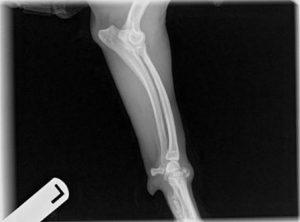
Just like any loved one, we don’t want to think about our furry friend developing cancer. However, it is good to be informed since the cancer is the cause of death in 50% of patients 10 years and older. Statistics also show that 1 in 4 dogs and 1 in 5 cats will develop cancer – making cancer the leading cause of death for pets in the US.
So here is some basic information on cancer in pets.
Most Common Types:
Dogs and cats actually get many of the same types of cancers seen in humans. Here are the most common types of cancer found in our pets:
- Hemangiosarcoma – Cancer originating from the lining of blood vessels.
- Mast Cells Tumors – Tumors appearing anywhere on the skin.
- Lymphoma – A cancer that begins in cells part of the immune system called lymphocytes. This type is actually more common in cats compared to Dogs.
- Osteosarcoma – A bone cancer.
- Brain Tumor – Cancer that forms in the brain.
- Bladder Cancer – Cancer that develops in the bladder.
- Mammary Carcinoma – This type has characteristics of both common types of breast cancer (ductal and lobular).
- Malignant Histiocytosis – This is where the body begins to produce cancerous hystiocytes (a type of white blood cell that lives in the connective tissue). This disease is associated with Burmese Mountain Dogs since they have a genetic predisposition for it.
- Squamous Cell Carcinoma – Another type of skin cancer.
- Mouth and Nose Cancer – Cancer originating from the cells in the mouth or on the nose.
- Melanoma – A skin cancer that comes from the mutation of melanocyte (the cells that create pigment in skin).
- Testicular Cancer – Cancer originating in male organs.
Symptoms
Make sure that your pet has regular wellness exams so any signs of cancer can be detected as soon as possible. It always a good idea to take notice of any changes yourself, too. Here are some symptoms to watch out for:
- Abnormal odor from mouth, ears, etc.
- Wounds that won’t heal.
- Change in appetite.
- Lethargy
- Depression
- Coughing or difficulty breathing.
- Sudden and irreversible weight loss
- Lumps under skin.
- Bleeding from mouth, eyes,ears, etc.
- Persistent vomiting and diarrhea.
- Pain
If you notice any of these symptoms, please make an appointment to be seen by a veterinarian right away. Quick action gives your pet a better chance.

How to Diagnose
After a medical history and physical examination is performed, if cancer is suspected then your vet will confirm with:
- X-rays
- Ultrasound
- Blood tests
- Cytology – a test where some cells are taken from the tumor and looked at under a microscope. This will show if the mass is cancerous or not.
- PET scan
- CT scan
- MRI
Treatment options
- Chemotherapy – This is a terrifying option for a lot of pet owners because of the known side effects with humans. However, 80% of dogs and cats exhibit no symptoms from chemotherapy.
- Surgery
- Radiation therapy
- Holistic therapies
There are a couple of different factors that go into choosing which therapy or mixture of therapies your pet receives. These include:
- Age
- General Health
- Stage of cancer
- Type of cancer
- Biological behavior of the tumor
It is important to know that some cancers are curable. This depends on the stage and type of cancer, but it is possible. However, with others the only thing to be done is to control the spreading so your furry friend can live longer with as much comfort as possible.

Is it Preventable?
There is no way to truly prevent cancer since we don’t know what causes it. it is know that in some cases there is a genetic predisposition for it. However, there are a couple of ways to reduce the risk:
- Not smoking around your pet – Studies have shown that second hand smoke increases the risk of cancer in your pet.
- Spaying and neutering – This is especially important with female cats. If they develop mammary cancer, then it has an 85% chance of being cancerous. With dogs it is 50%.
If your pet does get diagnosed with cancer, know that your veterinarian will work with you to provide your pet with the best treatment plan to ensure their quality of life.
Again, please make regular wellness appointments with your veterinarian. This is the surest way for early detection of any problems so your pet can live a healthy and happy life.

